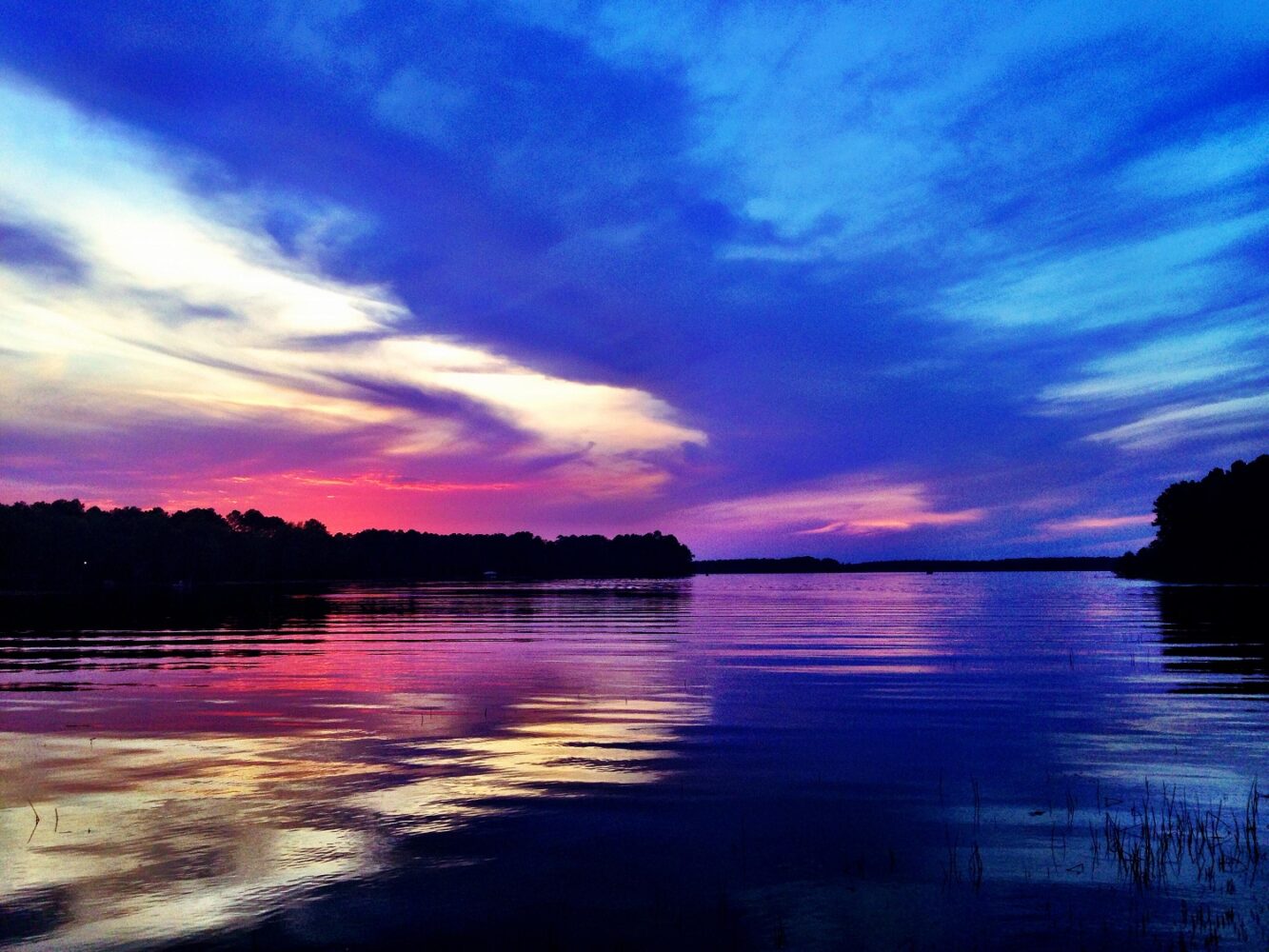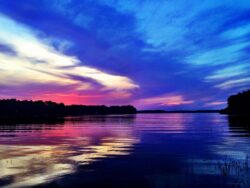Spring 2022
It’s More Than Just Great Bass Fishing
Toledo Bend Reservoir is a keeper
Published: February 27, 2022
Last Updated: June 1, 2023

Room the Agency / Alamy Photo
Sunset over Toledo Bend Reservoir.
For fishermen, it has been all about that bass since 1990, when more than twenty-eight million bass fingerlings were pumped into the lake, taking Toledo Bend from a “really good” fishing spot to one of greatest bass angling locations in the nation. In 2015 and 2016, Bassmaster magazine, the unrivaled authority for those hoping to reel in the ultimate bass, named the lake the number-one fishing destination in the country, and while its standing has decreased a bit, the reservoir still consistently ranks in the top ten US bass-fishing spots. And when the fight from these kings of freshwater fishing becomes too tiring, there are many more fish in the lake. Catfish, crappie, white bass, striped bass, and sunfish are plentiful and generally put up less of a struggle.
Remarkably, as recently as fifty-five years ago, having fish for dinner would have required a trip to the store, because the place where the lake is now was then bone-dry. The area now known as Sabine Parish was home to Native Americans and Spanish and American settlers, and some historians believe that many archeological gems are buried below the 4,477,000 acre-feet of water. The land that lies beneath this lake was also home to schools, stores, churches, cemeteries, and several tight-knit communities. Sawmills, stores, and schools were closed, burial ground remains were exhumed and moved, and whole communities were forced to give up their land and relocate their homes. The flow of the Sabine River was halted, and the water redirected to fill terrain within an earthen embankment, which then became Toledo Bend Reservoir.
The Sabine River Authorities of Texas and Louisiana were created in 1949 and 1950 respectively, with the purpose of creating and regulating this reservoir that would eventually serve as a water source, a means to fuel hydroelectric power, and an expansive recreational venue. The $70 million cost of the project was shared by Louisiana and Texas, without the use of federal funds, and the lake is jointly owned by both states. In 1969, the power plant was put into operation and to this day, the main source of income for both river authorities is the sale of electricity generated by the Toledo Bend Dam.
In a single year, approximately 205,000 acres of water pours through the dam gates, pushing turbine blades that fuel the generator, and producing 205 million kilowatt hours of power that is then divided between Texas and Louisiana power companies. In Louisiana, Entergy Corporation, Cleco Power, and Southwestern Electric Power Company have power sales agreements for the electricity generated through the dam.
But it is the lure of the lake that brings so many visitors to the vicinity, and not just for the fishing. There are two state parks: North Toledo Bend State Park located in Zwolle, covering nine hundred acres filled with hiking paths, bike trails, and numerous camping sites, and South Toledo Bend State Park, which lies on one thousand acres of bluffs in Anacoco and boasts similar outdoor recreation. Between the two parks are numerous lodges, boat launches, restaurants, art galleries, and antique shops all ready to make a visit to the reservoir as memorable as possible.
And there are, of course, the festivals. The Zwolle Tamale Fiesta, held the second weekend of October, is a favorite. Held in celebration of the region’s Spanish settlers and Native Americans—the same people whose artifacts may lie buried beneath the reservoir—the fiesta features carnival rides, live music, and of course, tamales. Lots and lots of tamales. Over 20,000 dozen corn-husk-covered delights are sold there each year.
The Choctaw–Apache Tribe of Ebarb, whose roots can be traced to the banks of the Sabine River as far back as the 1700s, holds its annual Veterans Powwow and Native American Art Fest in late April. Many of its members were forced to relocate during the land acquisition phase of the Toledo Bend project, but they have remained a strong, vibrant community, with thirty acres of their own land in Ebarb, where the powwow and many other traditional events are held.
Sabine Freestate Festival celebrates a wild period in Louisiana history, when the region was declared a “Neutral Strip” between Spain and the United States. Between 1806 and1822, anyone fleeing the law from either country could stay there without fear of arrest because both countries had removed all forms of law enforcement. Today, festival-goers can watch staged Wild West–style shoot-outs, parades, and pioneering demonstrations, as well as enjoy some local music, arts and crafts, and of course, great food.
If you’re in the area for Easter, there is always the Mud Truck Madness and Music Fest. Held every Easter weekend, contestants drive their amped-up rigs through a 525-foot mud pit in hopes of winning a $10,000 prize. Everyone is encouraged to play in the mud while listening to fantastic music and eating (hopefully after washing one’s hands) some of the best festival food available.
So take the bait, Louisiana, because it’s not just for fishing. Born through controversy, Toledo Bend Reservoir is still considered a great catch for the community.
Vona Weiss is a freelance writer whose work includes magazine articles, essays, and short stories. As a former AP calculus teacher, she spent many years facing a room full of teenagers before opting for something only slightly less terrifying: a blank computer screen and a looming deadline. Vona lives in Shreveport, Louisiana, with her husband, Jeff, where she spends much of her time trying to keep her crayons in order, her desk clean, and the angry villagers at bay.
